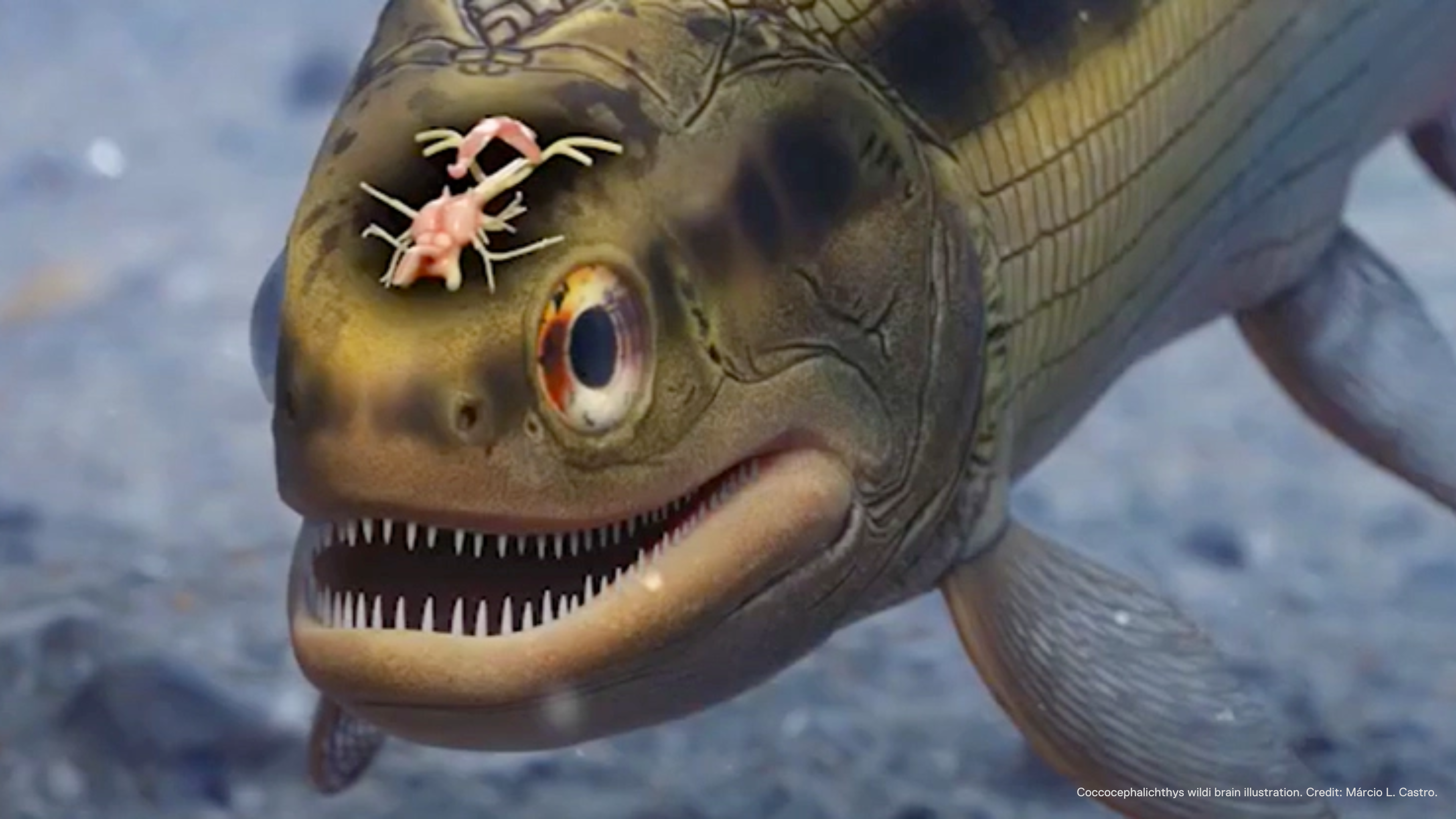
Name your favorite fish–odds are high it is a ray-finned fish, a member of the group of fish species called Actinopterygii that make up 99% of all fishes on the planet. Odds are minuscule, though, that you named Coccocephalichthys wildi. That’s because C. wildi is about 319 million years old.
Hang on, though: this species might quickly become one of your favorites. That’s because scientists have recently discovered the oldest known fossilized vertebrate brain inside the skull of a C. wildi specimen found in a U.K. coal mine over 100 years ago. The brain can tell us a lot about the evolution of the brains of all ray-finned fish species that exist today, ranging from inch-long dwarf seahorses to massive ocean sunfish. And since life began in the sea, it might also help us understand the origin of our own brains.
Finding the brain was a complete surprise to the scientists behind the discovery, who CT-scanned the C. wildi specimen to study the internal architecture of its skull. Conditions had been just right for it to mineralize inside the skull cavity, keeping the 3D structure of the animal’s brain and cranial nerves intact. The brain and other organs usually decompose quickly once animals die, so this level of preservation is relatively rare.
“Not only is the preservation of 319-million-year-old brain tissue amazing in and of itself, but it shows that soft tissue can indeed survive and enter the fossil record,” says Frost Science Curator of Vertebrate Paleontology Dr. Cary Woodruff. “This information is rewriting our understanding of the fossilization process.”
The discovery of the fossilized brain, which has already revealed secrets of fish brain evolution, demonstrates how valuable museum collections are to science–particularly in an era of rapid technological development. There certainly remains plenty of new information to unlock from old specimens!
Illustration Credit: Márcio L. Castro.